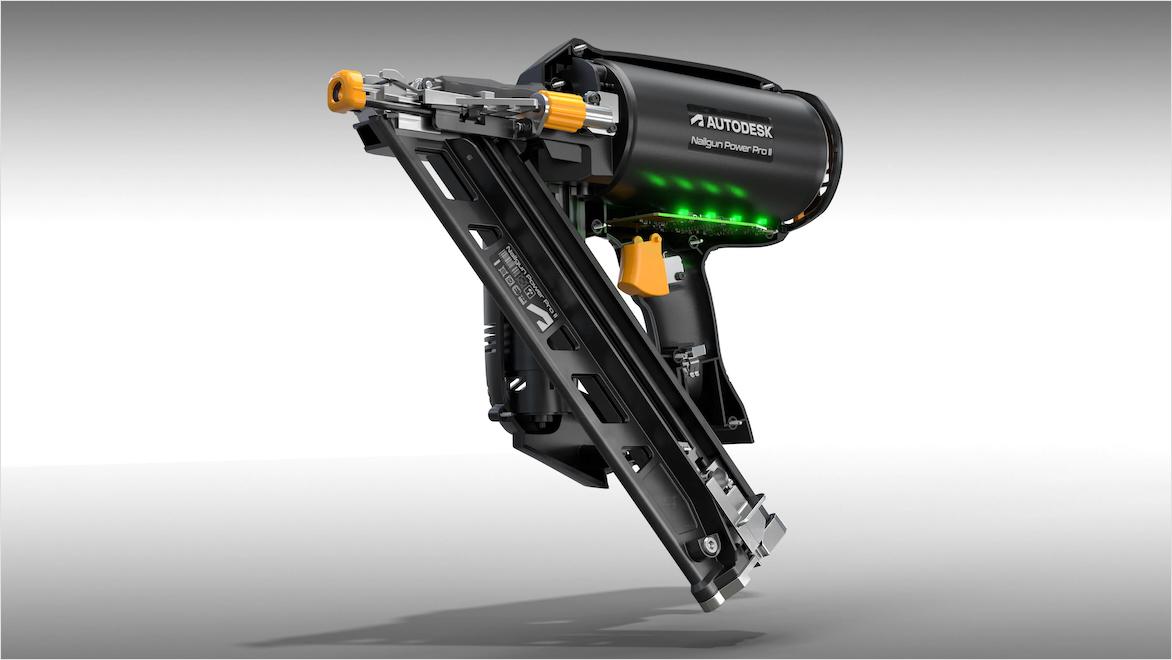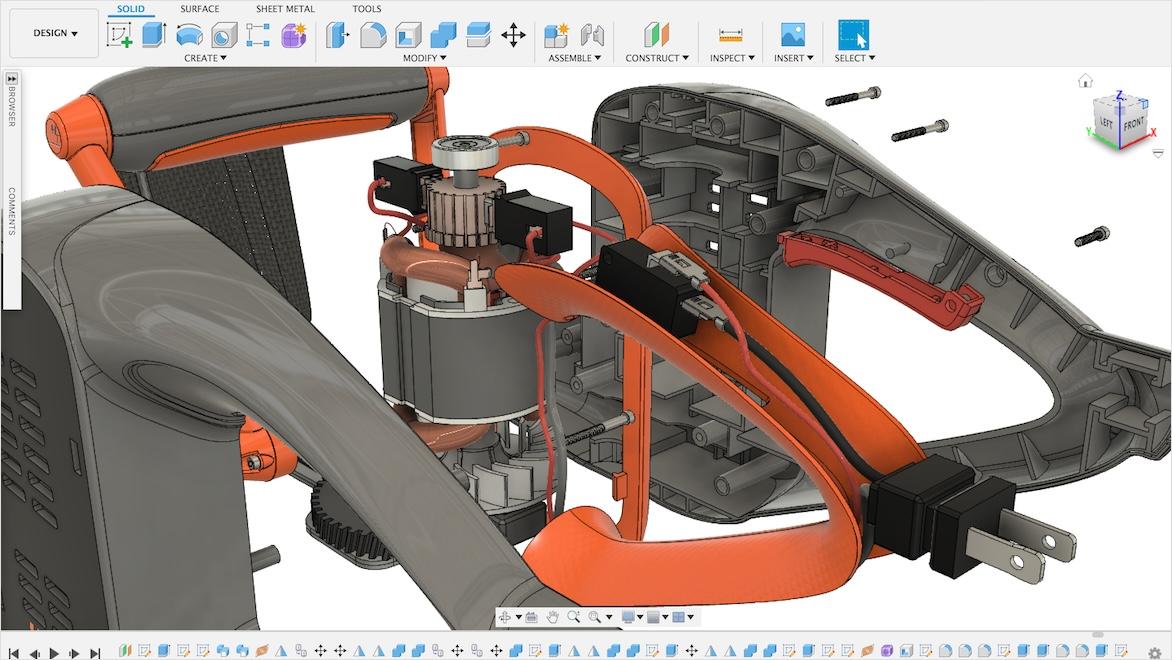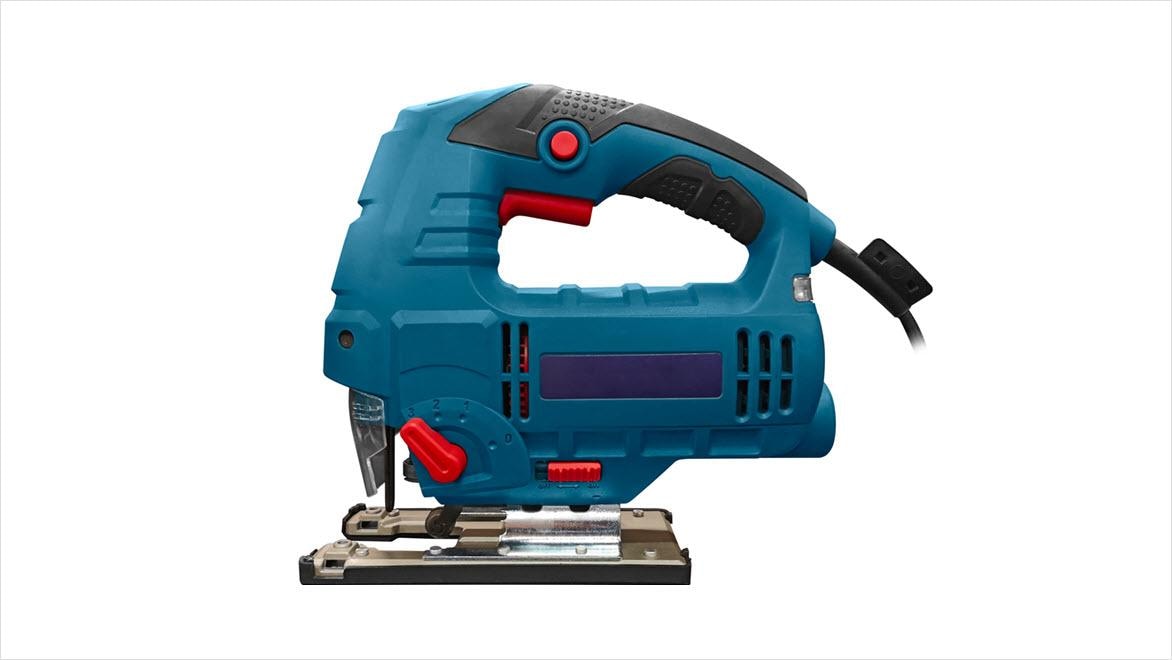& Construction

Integrated BIM tools, including Revit, AutoCAD, and Civil 3D
& Manufacturing

Professional CAD/CAM tools built on Inventor and AutoCAD
Power tool design and manufacturing is well over a century old, yet is becoming more sophisticated and demanding as consumers call for lighter weight, better reliability, and longer battery life from cordless power tools. As power tool design becomes more complex and incorporates more powerful computer chips and electronics, and power tool manufacturing requires more high-tech methods to stay competitive, advanced CAD and CAM software can help businesses keep up with the trajectory of making power tools more user-friendly, effective, and reliable.
Power tools have a long history, with many of the major manufacturers dating back to more than 100 years ago in the late 19th or early 20th centuries. However, their long-established businesses do not immunize them from modern challenges. One major challenge is understanding what new trends and technologies their customers want and investing in research and development to satisfy those desires.
Recently, power tools customers have gravitated toward lightweight cordless tools with a high degree of reliability and energy efficiency. That requires moving away from traditional power tool designs that used brushed motors, where the current-passing carbon brushes caused friction with the commutator. This friction reduced energy efficiency to about 80% and eventually broke down the motor.
To sidestep that problem, brushless direct current (DC) motors electronically produce the revolving magnetic fields power tool motors use, with no friction between the rotor and stator components. That frictionless operation yields more reliable motors and increases energy efficiency to as much as 96%. This technology also creates design and engineering challenges, as it requires a microcontroller chip to align the magnetic field, which adds space and cost to the power tools’ design. But as power tool design becomes more complex to keep up with customer demand, Autodesk’s CAD and CAM solutions, which combine mechanical and electronics design with manufacturing workflows, can become the power tool software of choice.
Power tool manufacturing has also become more complicated as power tool design has grown in sophistication. Yet again, developing technologies offer solutions. For example, additive and subtractive manufacturing processes like 3D printing and CNC machining make power tool prototyping faster and more cost-effective. New materials offer better performance in durability and user ergonomics. And smart manufacturing makes use of automation and artificial intelligence (AI) to make power tools manufacturing more flexible and efficient. Power tool manufacturers are even utilizing AI’s potential to improve the tools themselves by infusing performance-enhancing AI into the tools’ system-on-a-chip (SOC).
Power tool design can make use of four different means of power. These are:
The tool is connected by a cord to a mains electricity supply, or by a battery.
Compressed air drives the movable parts of the tool, such as in nail guns and paint sprayers.
Power tools designs with combustion engines use liquid fuel such as gasoline to provide their energy.
Pressurized fluids, such as hydraulic oil, generate force to drive the action of hydraulic power tools.
Both corded and cordless power tool designs have their own pros and cons, and the right choice often comes down to the way in which the consumer will use it.
Corded power tools have one key benefit not offered by cordless power tool designs – they never run out of power and never need recharging. This means that they can operate continuously, and that they are able to offer a consistent amount of power and torque. On the other hand, mobility is somewhat restricted by the length of the cable and proximity to power points, and the cord can be a hazard on the jobsite.
Cordless power tool designs benefit from greater mobility and practicality, as they can be used virtually anywhere. Modern batteries hold a lot of power, but they still need to be recharged eventually and may lose performance as their charge lowers. Power tool manufacturers also need to consider that the battery adds extra weight to the design.
With power tool software from Autodesk, designers and engineers gain efficiency and high-end capabilities like simulation while cutting costs and maximizing quality, with benefits like:
With design and engineering software from Autodesk, designers, manufacturing engineers, executives, and other stakeholders can effectively collaborate in one cloud-connected environment, working with the most up-to-date data. Teams can work together from anywhere in the world and make better decisions working from the same files.
Autodesk Fusion software for power tools manufacturing and design can cut costs with visualization and simulation features that can reduce the need for physical prototypes. It can also provide cost estimates for material selection and reduce material use with its generative design abilities.
Along with CAD and CAE (computer-aided engineering), Autodesk Fusion integrates CAM into one software. Functions like automatic data translation and automatic toolpaths allow a smooth transition from design to manufacturing and make it easy to tweak the manufacturing processes directly within the software.
Using software for power tool manufacturing and design helps streamline processes by automating complex calculations, simulations, and analyses. This speeds up the iterative product development workflow.
With the simulation abilities in Autodesk CAD software like Fusion, power tool manufacturers can conduct virtual performance testing, which lessens the need for physical prototypes. Then, during the physical production stages, the software’s simulation can virtually test machining processes to find and eliminate manufacturing errors and material waste.
One of the biggest challenges in power tool design and manufacturing has been tool longevity and maintenance frequency, as result of the ‘brushed motors’ which are used to generate motion. Many power tool designs are now getting around this by using brushless designs but this can drive up the cost of the design. Other challenges include ensuring that power tool designs comply with strict safety regulations and ensuring a competitive balance between price and technological advantage. Power tool design software such as Fusion can be of great benefit in figuring out these factors before committing to a physical design.
Learn about sheet metal manufacturing processes, a popular technique for power-tool components and electronic components due to its combination of malleability and structural integrity.
The top-down modeling CAD approach begins by conveying design intent for an overall assembly before teams work on specific subsystems. This method particularly suits complex products such as vehicles, power tools, appliances, and other electronics and machines.
Power tools, such as power drills, jackhammers, and others, are some of the most important construction site tools. Brush up on tools’ onsite roles, tips for safe operation, and the most popular power tool brands in use.
Autodesk Fusion seamlessly integrates PCB and electronics design, mechanical design, simulation, cloud-connected collaboration, and CAM machining, helping streamline workflows and optimizing circuit designs for power tools manufacturing.
Find info, tutorials, and other resources for electrical toolset design and electrical schematics use within Autodesk AutoCAD software.
By integrating the Milwaukee OneKey asset manager into Autodesk Build and BIM 360 within the Autodesk Construction Cloud, project managers can keep track of all compatible power tools and other equipment, as well as generate reports within the software.
Generative design refers to the use of AI and cloud computing to quickly create a wide array of alternative designs based on user-defined parameters. For power tool designers, this means that they can specify within Fusion certain aspects of the tool they are designing, such as performance, materials and dimensions, and the AI will work to find the best solution and present these for consideration. Generative design then can save both time and resources, allowing you to find the best power tool design quickly, without the need to build and trial multiple prototypes.
Designing a power tool begins with conceptual and market research to identify what users need that the market has not yet supplied. The power tool designer should choose between a cordless or corded power tool and between a brushed or brushless motor.
Power tool designers should also choose lightweight but durable materials. Certain CAD software, like Autodesk Fusion, can help with material selection. Using power tool design software will also help to make the mechanical and electrical design of the tool faster yet more accurate. Fusion has CAM features as well, which help with making power tool prototypes for testing before finishing the final design.
Building your own power tool will be a complex challenge involving mechanical and electrical engineering, but it can be done either by designing an original power tool (see above) or using off-the-shelf components for many of the parts and fabricating others.
Key power tool manufacturing components are the motor, such as a 12V brushless motor, variable speed trigger, and a rechargeable battery for a cordless power tool. There are many other parts to be built such as metal gears, a plastic enclosure, rubber grips, and so on, which can be designed and manufactured with Autodesk Fusion or other software using techniques like injection molding, 3D printing, and CNC machining.
A power tool is any device or machine which uses an external power source to operate, as opposed to relying on human labor. Power tool design aims to take the effort out of specific tasks.
A wide variety of tools for many different purposes are available as powered devices. Power tool designs include a variety of different kinds of saws for cutting through material, drills for creating holes, impact drivers for placing screws, Impact wrenches for loosening bolts and grinders for cutting, polishing and sanding.


